Until September brings another round of refreshed iPhones, the two smartphones in this comparison may well be the two most popular (and possibly the best) phones you can buy. Let's see how the features and specs of the Samsung Galaxy S8 and Apple iPhone 7 compare.
Size

The Galaxy S8 is 8-percent taller, but measures just 1 mm (0.04 in) wider.
While the iPhone is 11-percent thinner, the S8's curves prevent it from feeling chunky in hand.
Weight
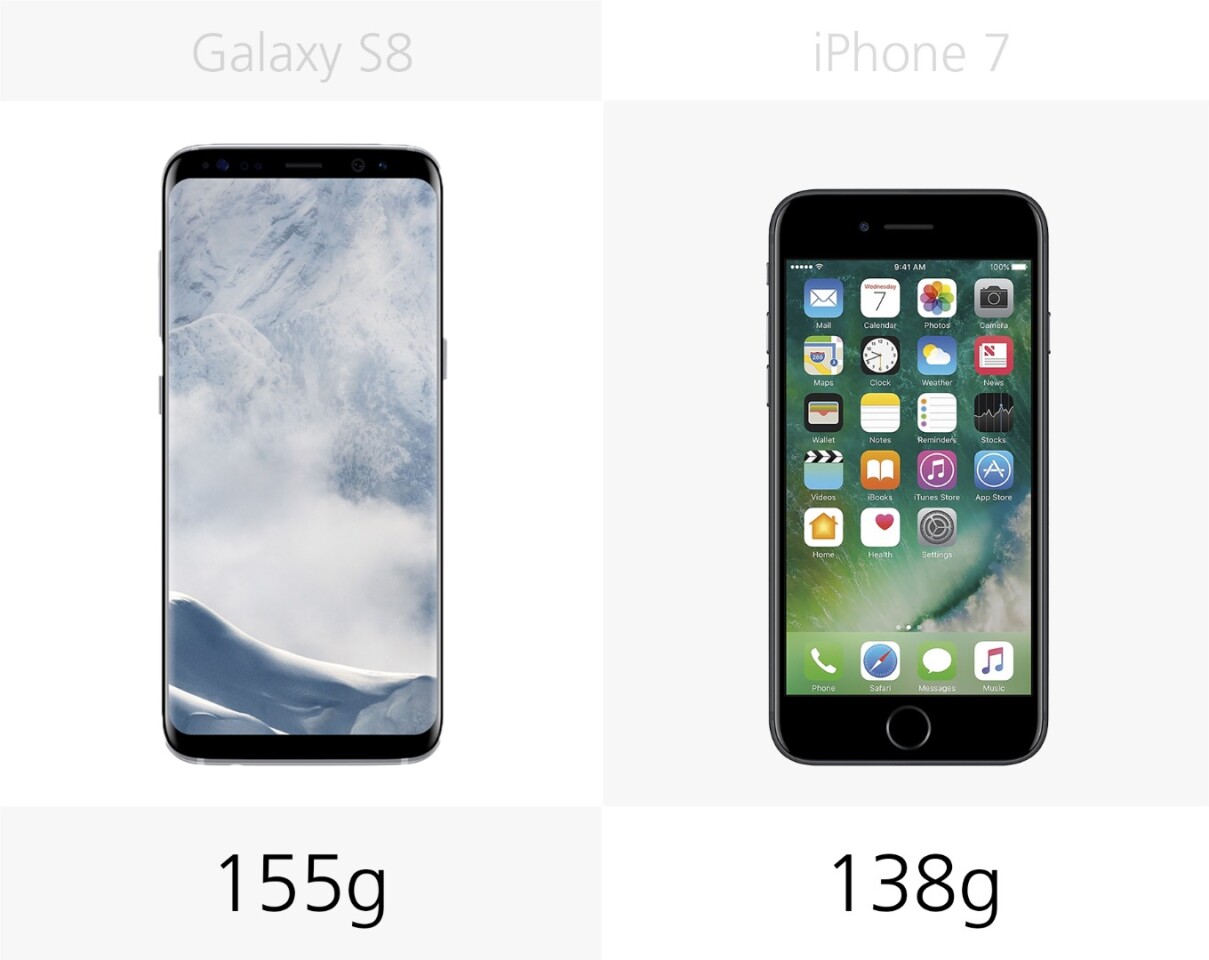
The smaller iPhone is 11-percent lighter.
Build

Both manufacturers are staying on their respective courses: Samsung has been making glass-back/aluminum-frame flagships since 2015, while Apple's iPhones have been all aluminum since late 2012 (following the first iPhone's aluminum design in 2007).
Colors

You'll have plenty of colors to choose from with either device.
Water resistance

Both offer impressive water resistance, though Samsung's IP rating is higher.
Display size

While the Galaxy S8's overall phone size is a little bigger, its screen size is 40-percent bigger than the iPhone's, reminding us that slim-bezeled phones offer more than looks: They also give you more screen-size bang for your phone-size buck.
Display resolution
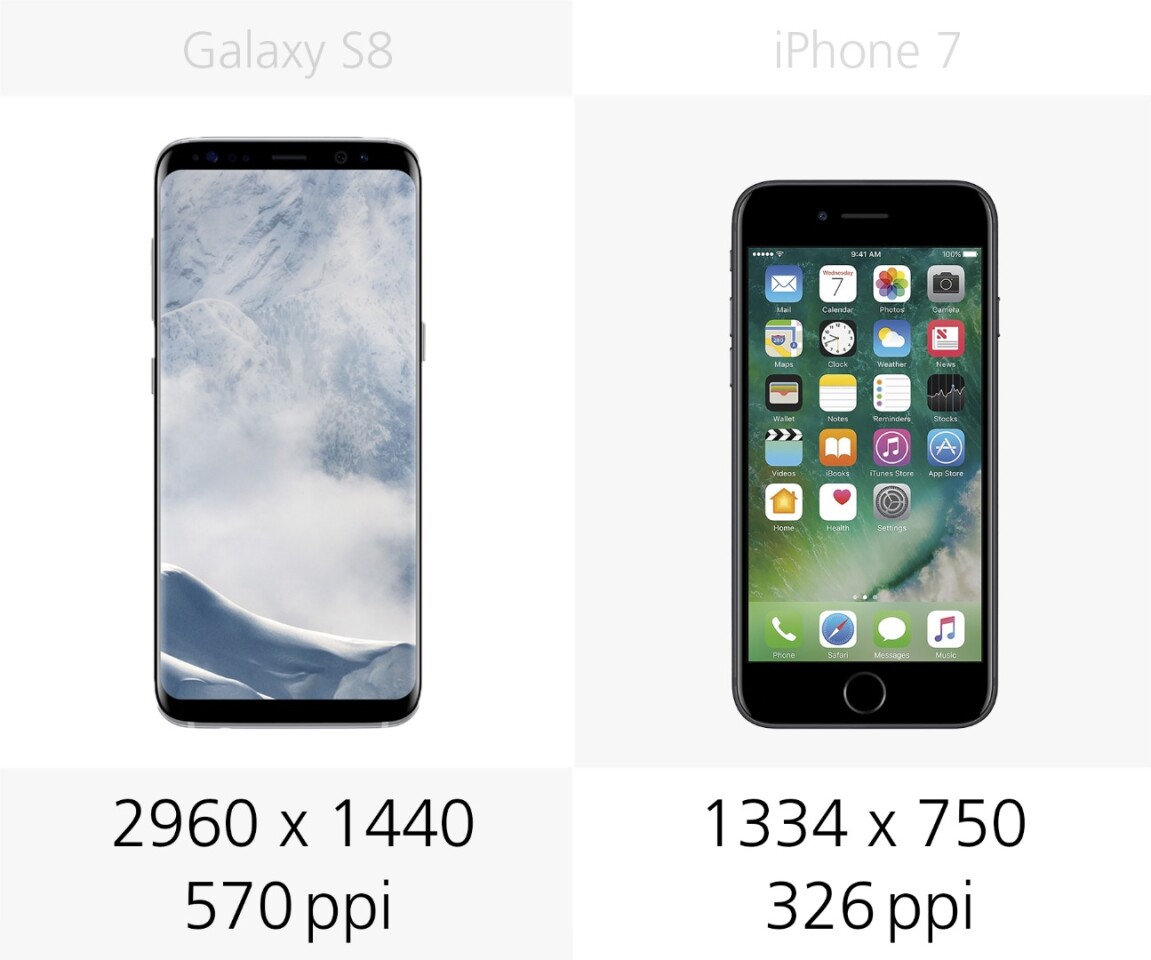
The Galaxy S8's display has a 75-percent sharper pixel density, but remember Apple does plenty of things in other areas (contrast, white balance, brightness) to make its screens competitive with high-end rivals.
With that said, display analysis firm DisplayMate recently graded the Galaxy S8 as having the best smartphone display to date.
Display type

Apple is rumored to join Samsung with an AMOLED flagship later this year, but the iPhone 7 sticks with IPS.
Curved display

The S8's display slopes off on either side.
Home button location
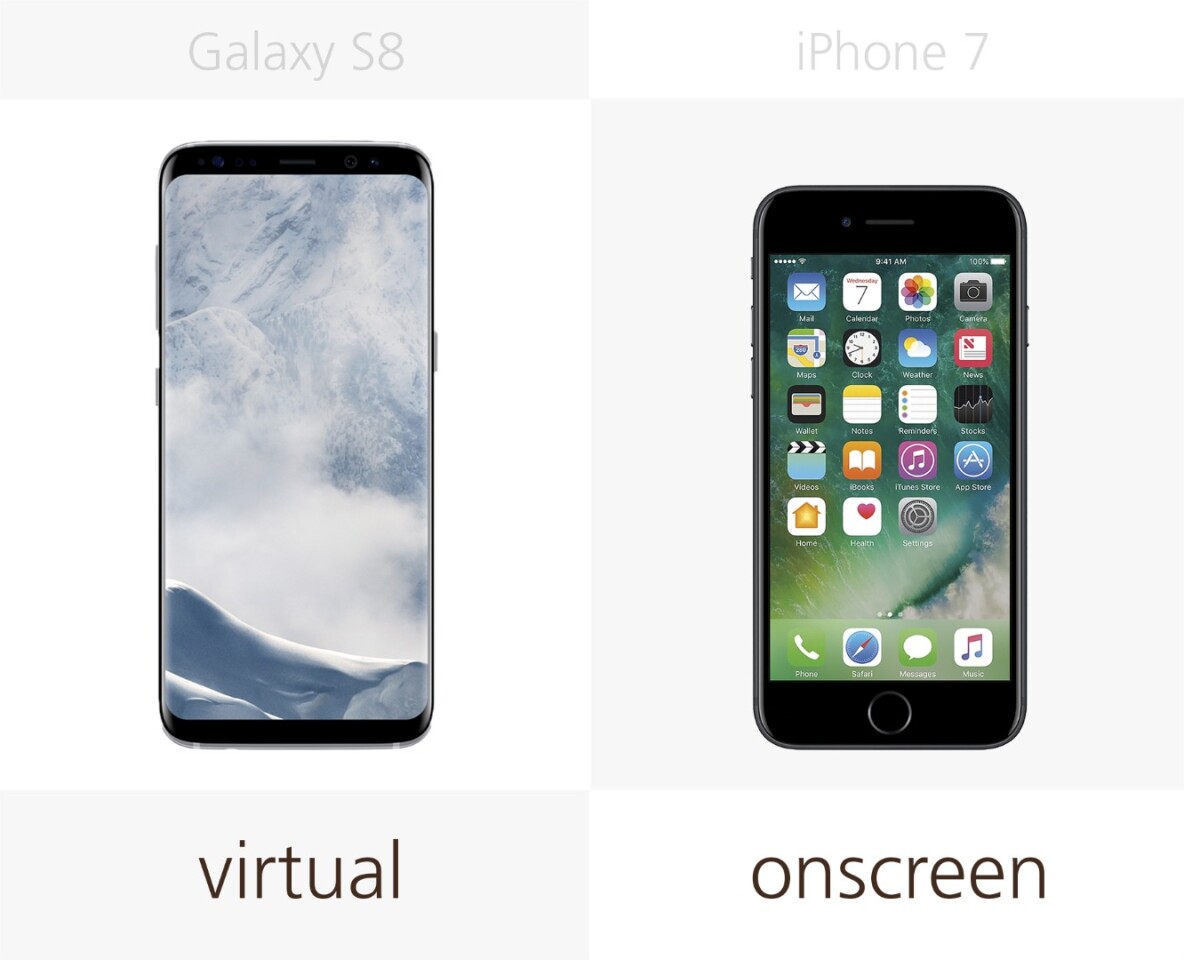
Apart from areas where Android goes into full-screen mode (videos, games), some of the Galaxy S8's display real estate will be taken up by virtual navigation keys.
Pressure-sensitive display

Apple's 3D Touch lets you deep-press on the screen to launch various shortcuts throughout iOS. The Galaxy S8 has similar tech, but instead of spanning the entire screen it's only baked into its onscreen home button.
Fingerprint sensor
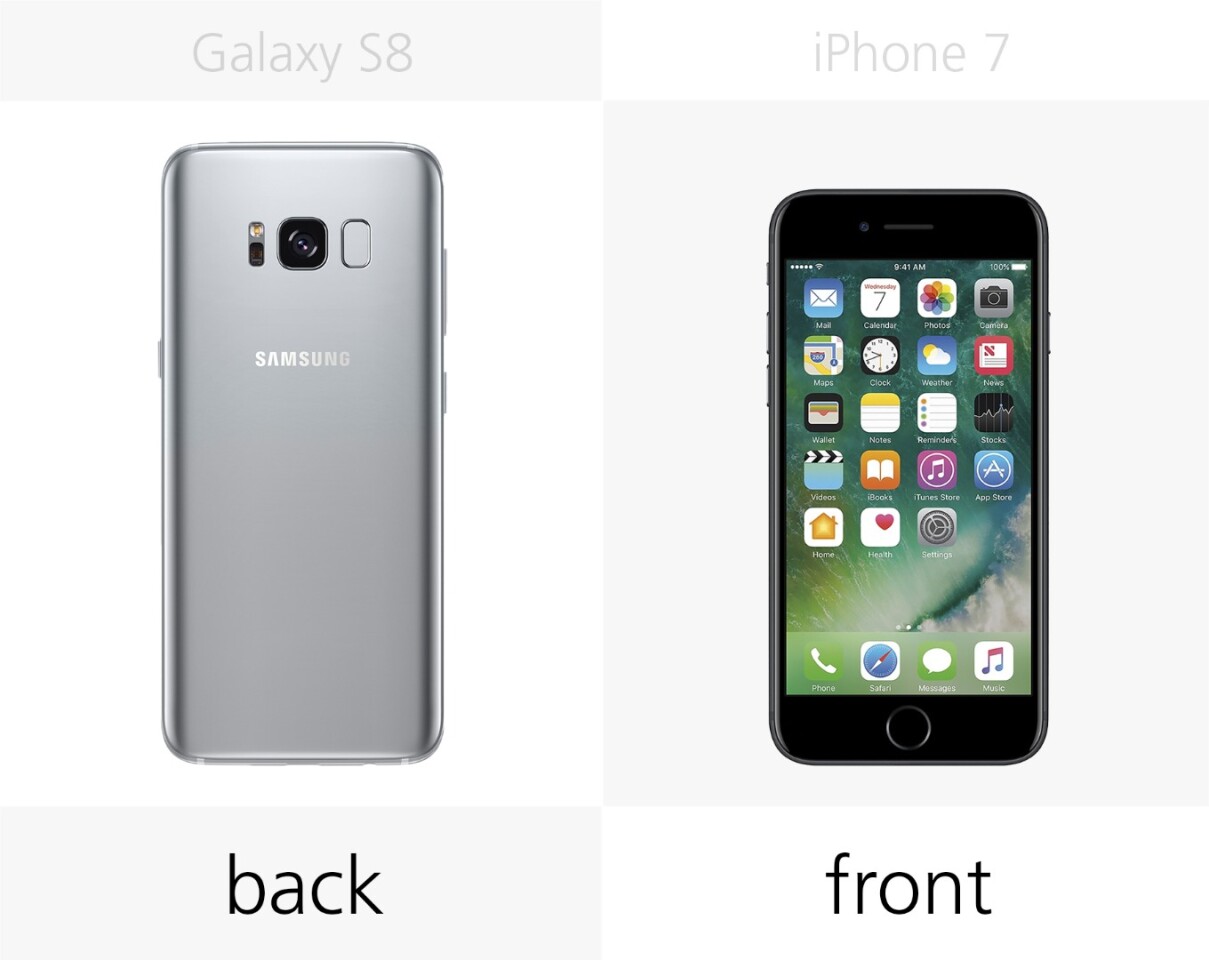
Samsung moves the fingerprint reader to the back of the phone this year, to accommodate that nearly-all-display front side.
Iris scanner

Similar to the Note 7, the Galaxy S8 has an iris scanner. It supposedly works faster than the one in the Note, though, and our launch-event demo appeared to confirm that.
Facial recognition

It may not be very secure, but Samsung offers a facial recognition login as an alternative to the fingerprint or iris scan.
Processor
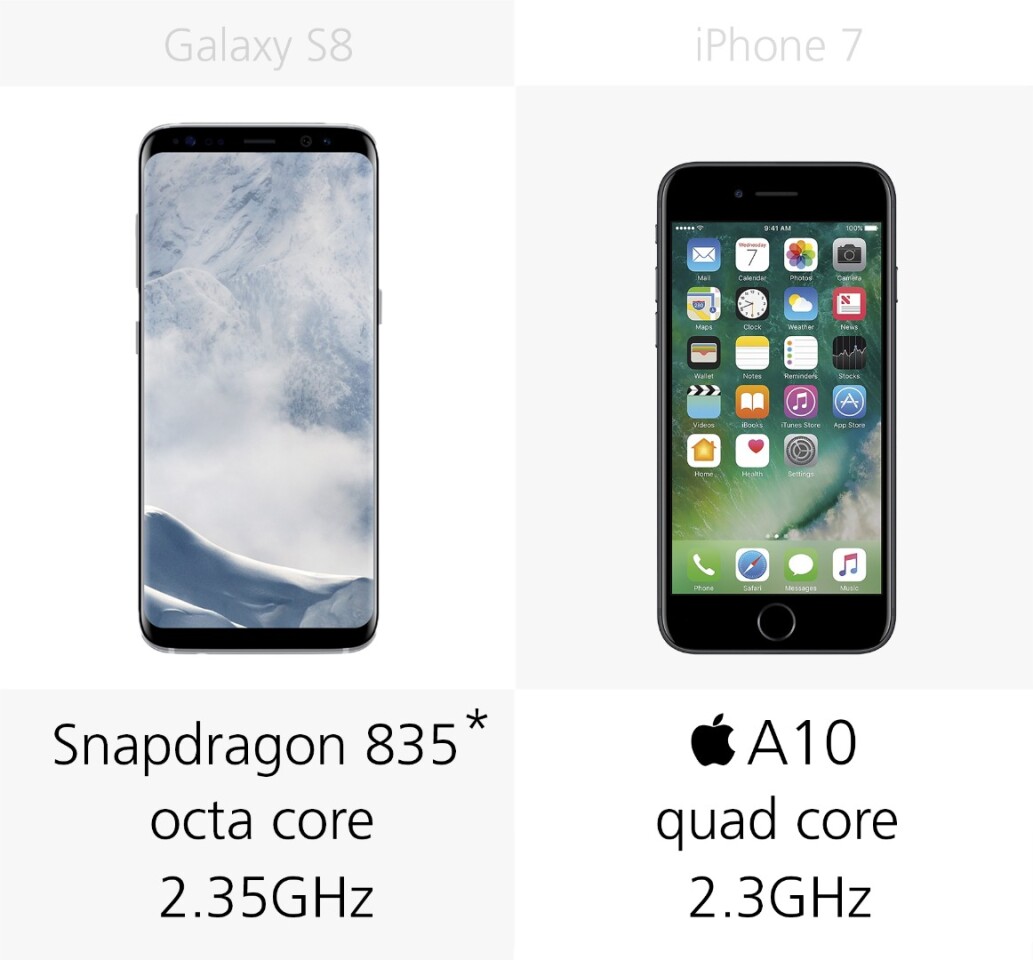
North American Galaxy S8 buyers will see the new Snapdragon 835, while many other markets will get an octa-core Samsung Exynos chip in its place.
RAM

The S8 doubles the iPhone's RAM, but that doesn't always translate into better performance.
Storage
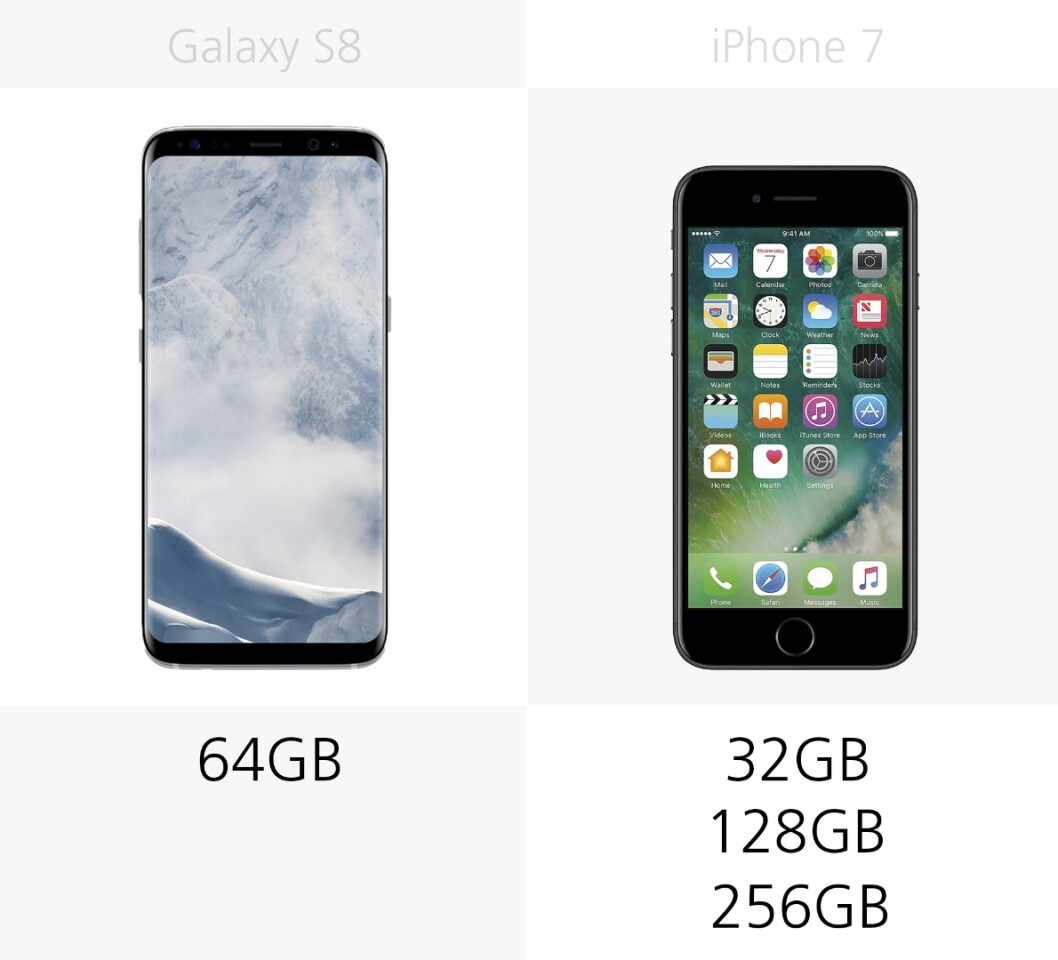
Rather than targeting customer upsales with a variety of storage tiers, Samsung offers one (rather generous) 64 GB option.
microSD

If you store lots of videos or music on your device and are worried 64 GB isn't enough, Samsung also lets you use a microSD card to complement the internal storage.
Battery

The Galaxy S8 has a much higher-capacity battery, but many other factors determine real-world battery life. Stay tuned for our review for battery tests.
Fast charging
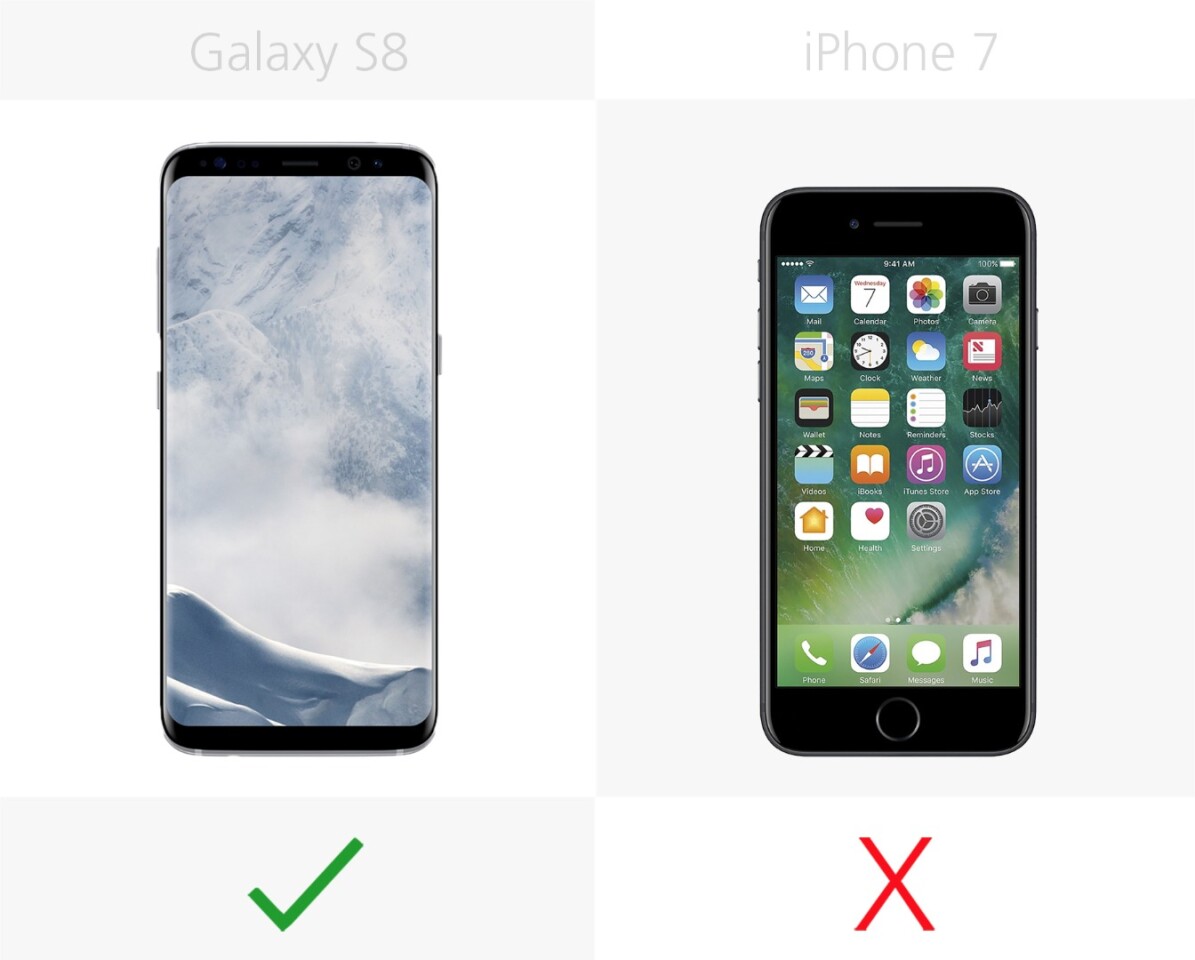
Apple still hasn't added any quick-charging tech to iPhones.
Wireless charging

Samsung is one of the few smartphone-makers still supporting wireless charging – which also includes fast wireless charging, if you go with a special Samsung-made pad.
Camera megapixels
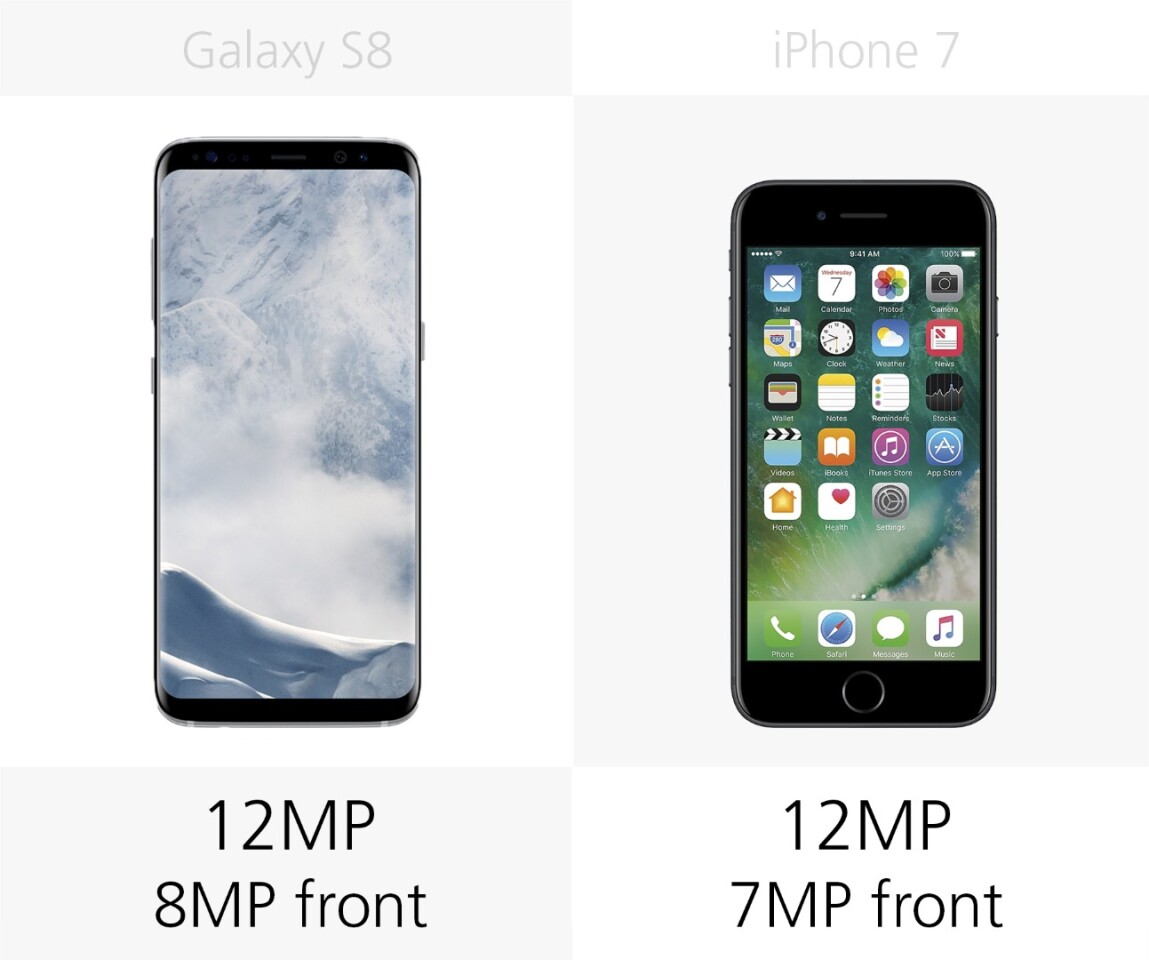
Similar to battery capacity, camera megapixels tell you very little about photo quality. Stay tuned for review unit impressions.
Camera aperture (rear)
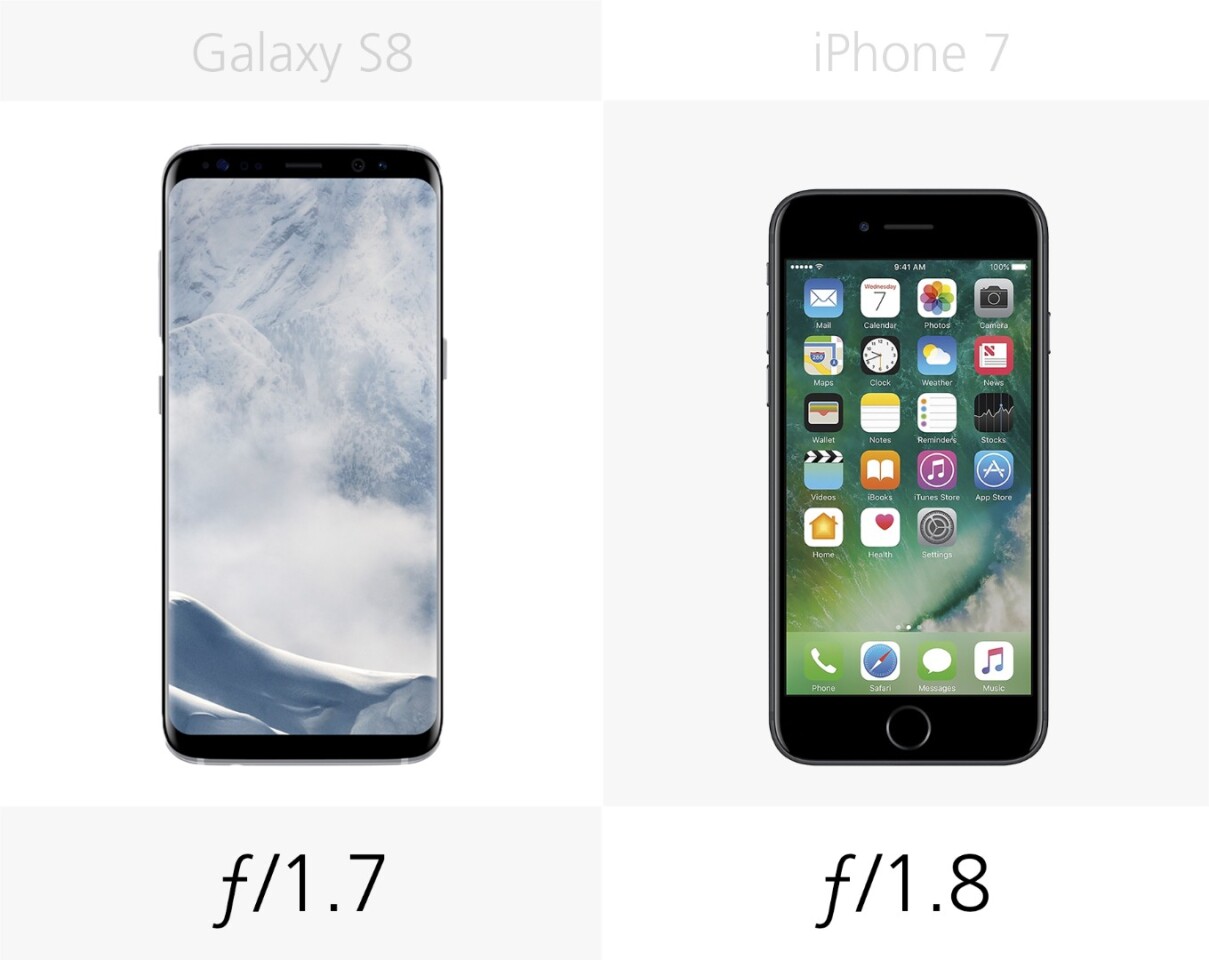
The Galaxy S8's rear camera has the slightly wider aperture, often a factor in determining low-lit photo quality.
OIS
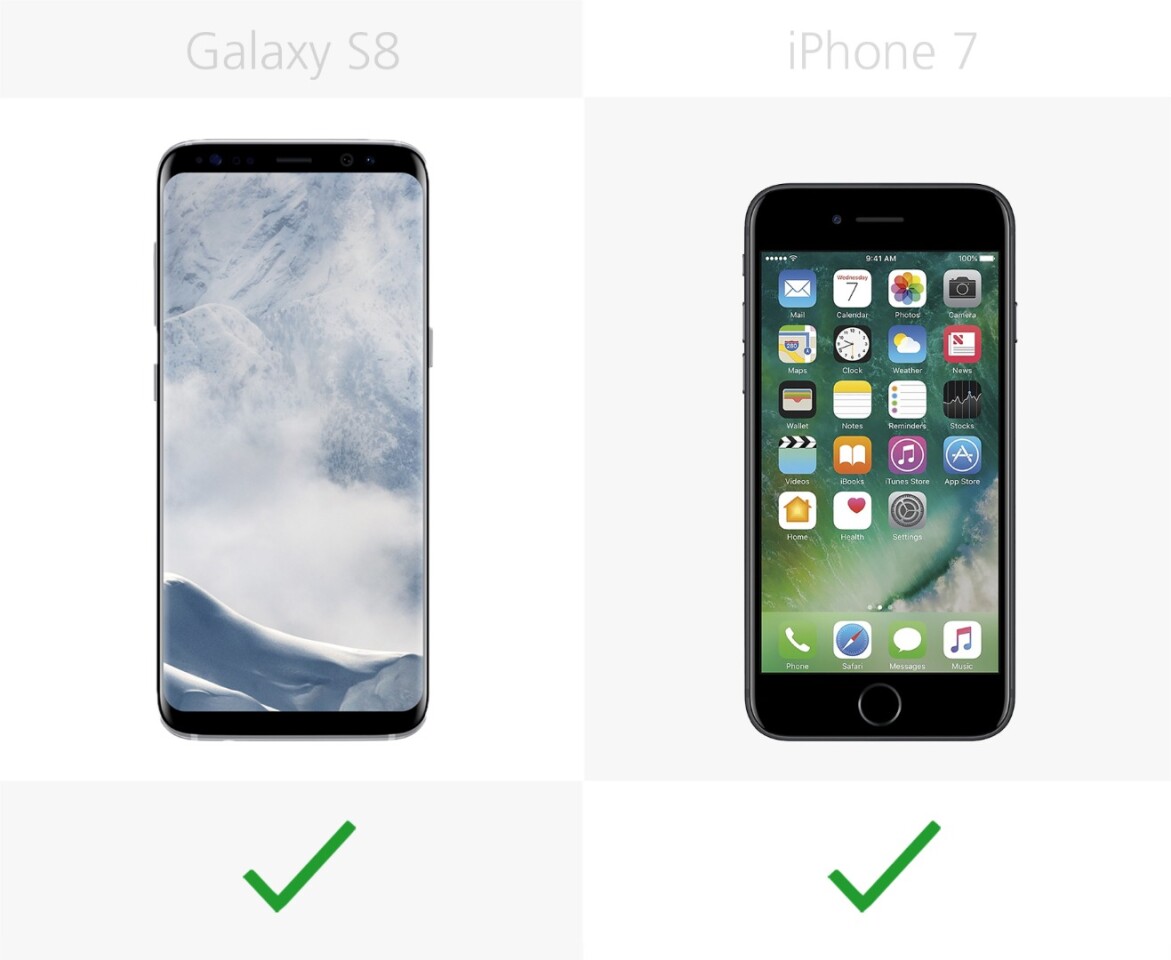
Both have Optical Image Stabilization.
Mobile payments

It's Samsung Pay vs. Apple Pay, but Samsung's has the advantage of working at most magnetic swipe-based credit card readers. Apple Pay only works at retailers that have installed NFC terminals.
VR
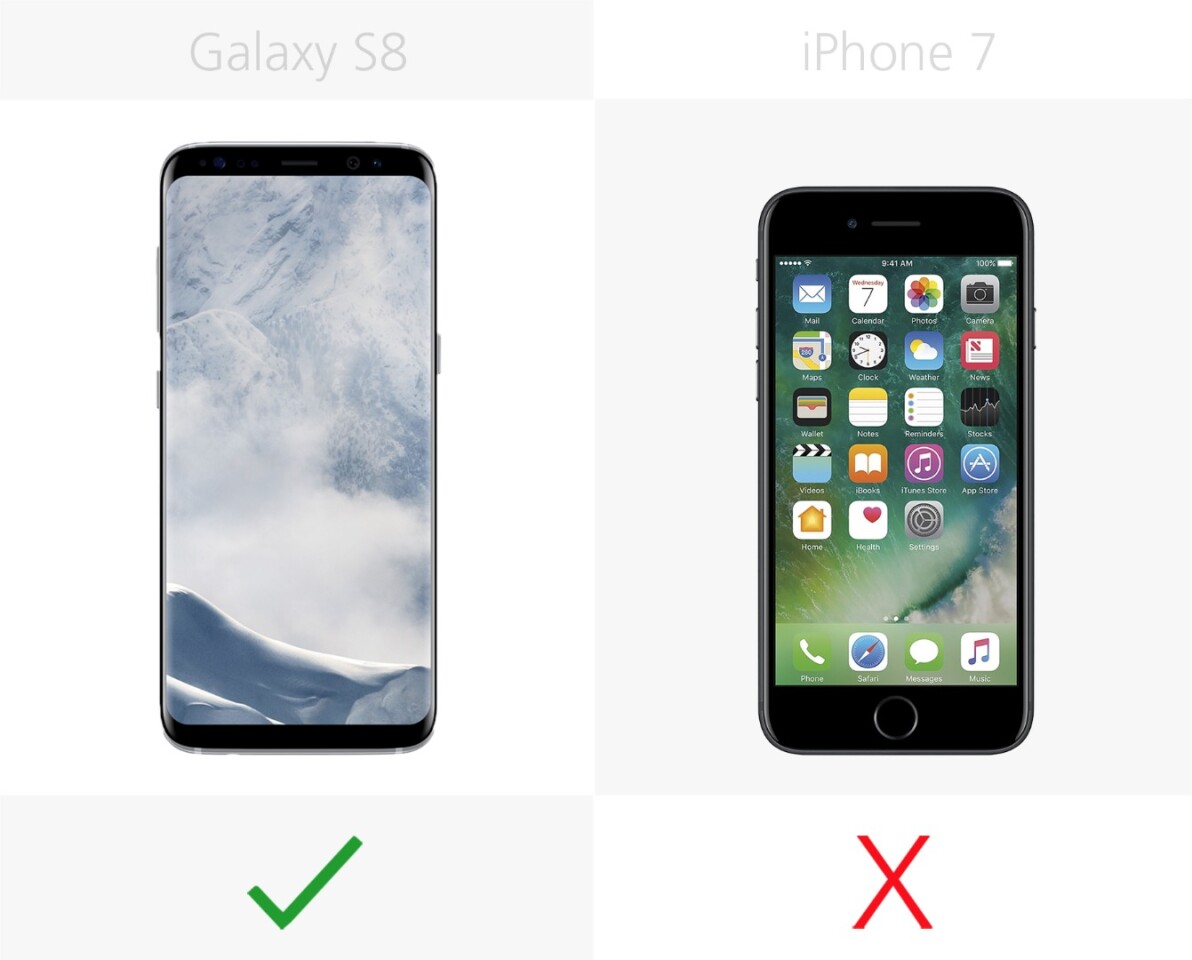
There are no significant VR headsets compatible with the iPhone. The Galaxy S8 works with the most content-loaded mobile headset, the Gear VR (which now has a controller).
PC dock
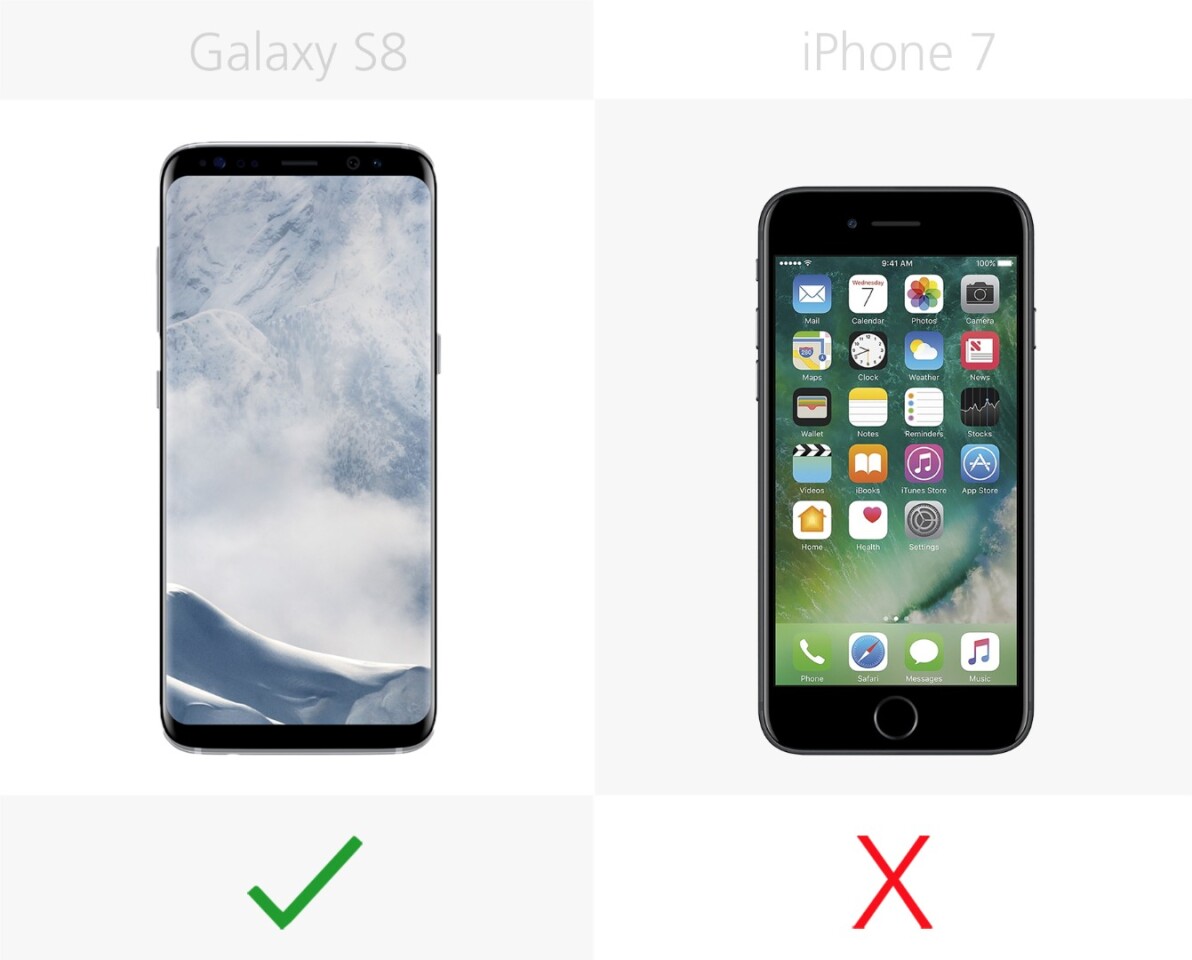
Samsung's DeX is a US$150 dock that lets you use the S8 to power a PC-like experience: Just add mouse, keyboard and monitor.
Headphone jack

Apple killed the 3.5-mm headphone port in the iPhone 7: Samsung let it live to fight another day.
Software

The S8 launches with Android Nougat, though with a heavy touch of Samsung's custom UI (TouchWiz). The iPhone runs iOS 10.
Voice assistant
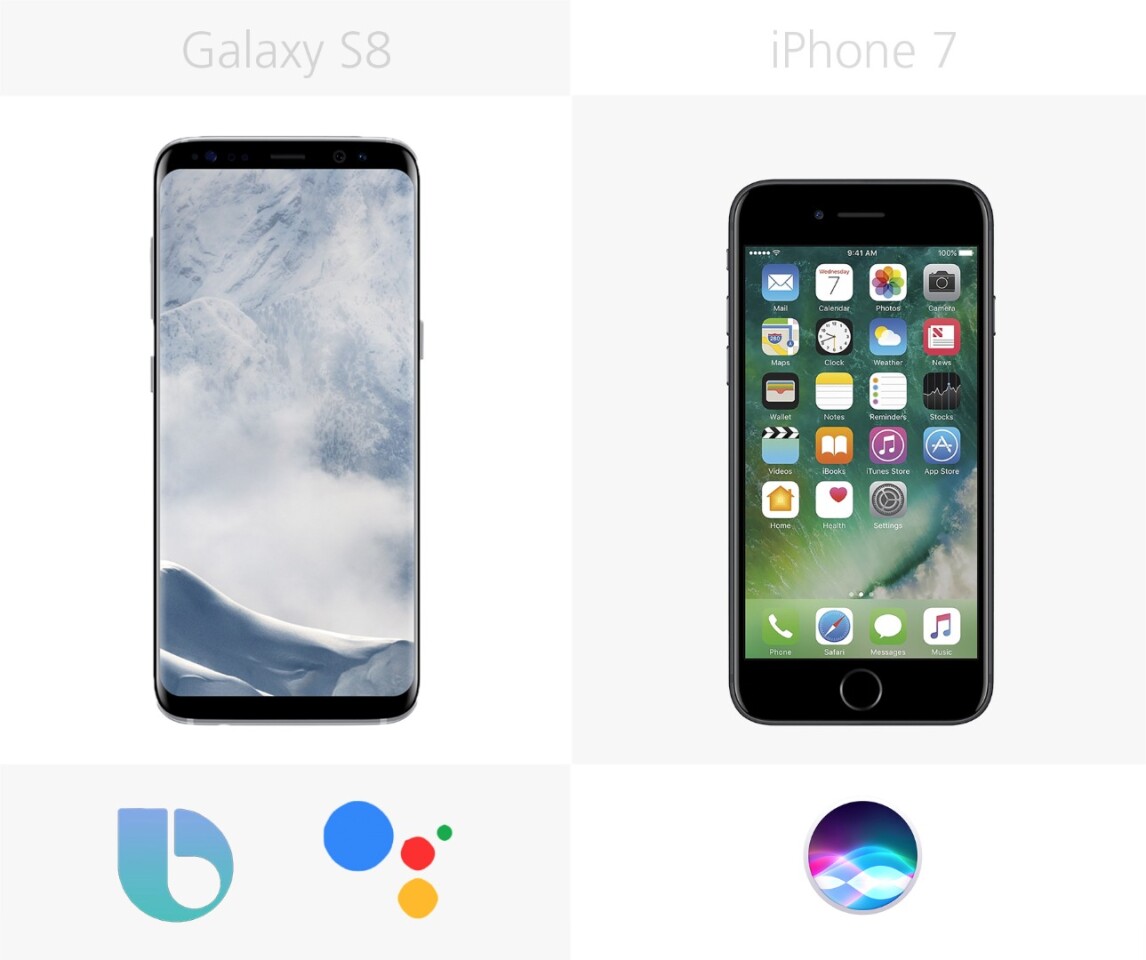
Somewhat confusingly, the Galaxy S8 includes both Google Assistant and its own alternative voice-control AI, Bixby (which has its own dedicated hardware button). The iPhone, of course, uses Siri.
Release
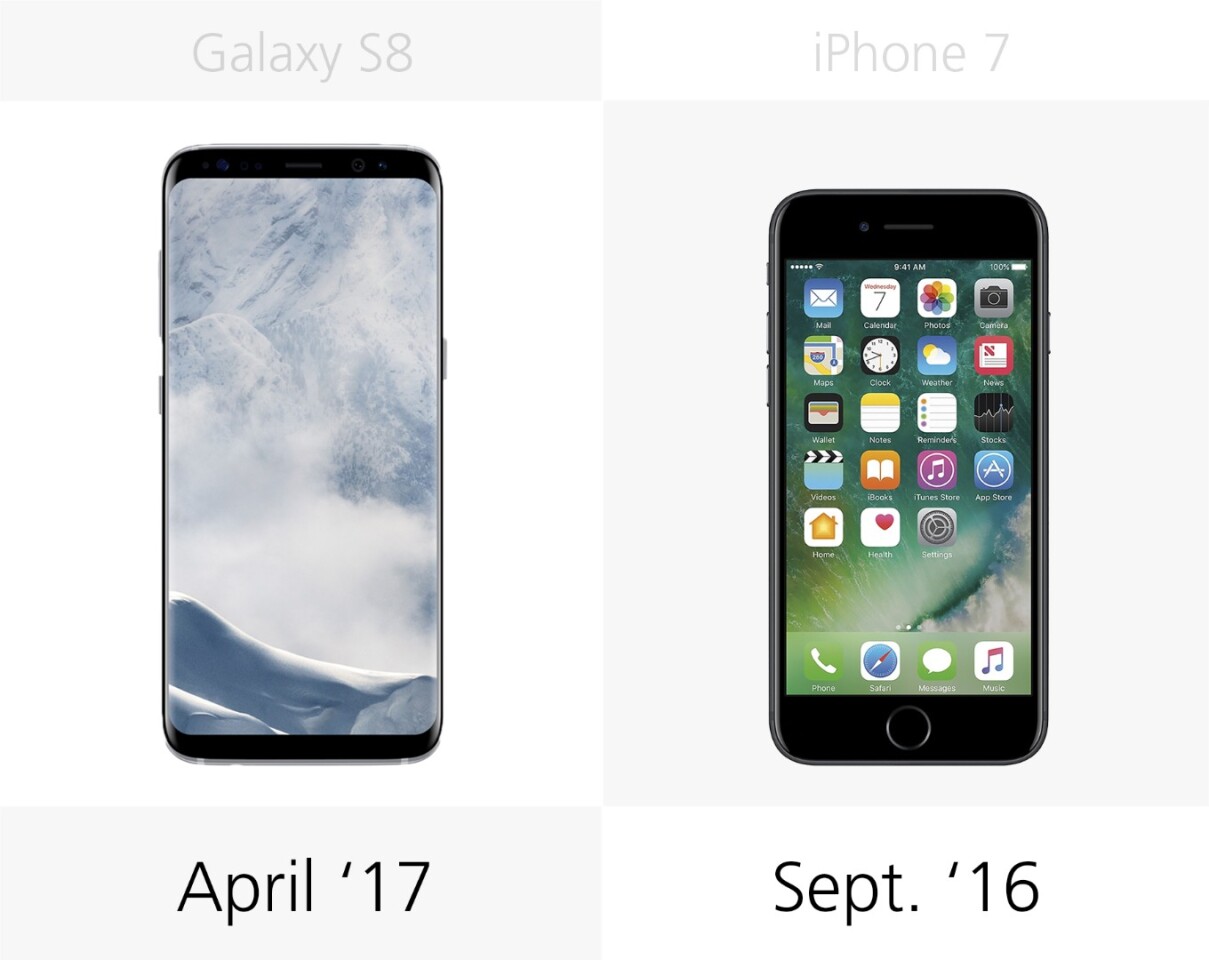
The Galaxy S8 launches on April 21.
Starting price (full retail)

Galaxy S8 pricing will vary a bit depending where you buy it, but either way it's raising expectations of what you pay for a flagship. Are its futuristic design, better screen-to-phone-ratio and other various perks enough to justify a price that starts in the mid-US$700s? And that's not including the larger model (Galaxy S8+), which starts in the mid-$800s.
We'll try to answer these questions in our full review. For more on these phones in the meantime, you can check out New Atlas' Galaxy S8 event hands-on and our iPhone 7 review.




































